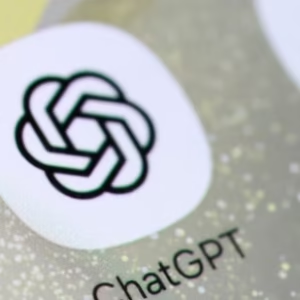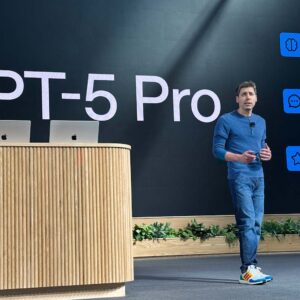In April 2025, Google released a 69-page prompt engineering guide that’s making headlines across the tech world. Officially titled as a Google AI whitepaper, this document has gone viral for its depth, clarity, and practical value. Written by Lee Boonstra, the whitepaper has become essential reading for developers, AI researchers, and even casual users who interact with large language models (LLMs).
What Is Prompt Engineering and Why Does It Matter?
Prompt engineering is the science of asking the right questions—or giving precise instructions—to get useful responses from AI models like ChatGPT or Google’s Bard. While AI seems magical, the results depend heavily on how you “talk” to it.

The Google AI whitepaper explains various techniques like:
- Zero-shot prompting: Asking AI to answer without giving any examples.
- One-shot prompting: Providing one example to guide the AI.
- Few-shot prompting: Supplying a few examples for more complex tasks.
These simple but effective techniques help both beginners and experts interact better with LLMs. The viral prompt engineering paper doesn’t just throw around technical jargon; it presents real-world examples that show how prompt quality directly affects output accuracy. This is especially helpful in tasks like generating content, solving coding problems, or summarizing research.
What Makes Google’s Prompt Engineering Whitepaper So Popular?
The Google prompt engineering whitepaper 2025 is not just popular—it’s influential. Why?
- Right Timing: AI tools are now part of everyday life, from education to marketing. Google released this whitepaper just when people were eager for better AI control.
- Hands-On Examples: Unlike many theoretical AI papers, this whitepaper focuses on practical applications. You’ll find code snippets, comparison charts, and even sample prompts to test yourself.
- Wide Reach: It was shared across Reddit, LinkedIn, X (formerly Twitter), and multiple blogs. Influencers and AI communities quickly labeled it a “must-read.”
The viral prompt engineering paper helps users unlock better performance from models they’re already using. This accessibility is what sets it apart—it’s made for real people, not just academics.
Techniques Highlighted in the Whitepaper
Zero-shot, One-shot, Few-shot Prompting
One of the most highlighted parts of the Google AI whitepaper is the comparison between zero-shot, one-shot, and few-shot methods:
- Zero-shot: Best for quick tasks or questions when you’re short on time.
- One-shot: Perfect for when you need to clarify the style or format.
- Few-shot: Great for detailed tasks like product descriptions or customer service scripts.
Each method plays a role depending on your need and the complexity of your task.
Chain of Thought Prompting
Another advanced feature discussed is Chain of Thought prompting. This technique encourages the AI to break down a task step-by-step instead of jumping to a conclusion. It improves reasoning and logical response generation.
For example:
“Let’s break this down step by step: What are the key differences between solar and wind energy in terms of installation cost, efficiency, and long-term benefit?”
By prompting this way, the AI gives a more structured and thoughtful answer.
Impact on AI Development and Industry
The release of the Google prompt engineering whitepaper 2025 could shape the future of AI across multiple sectors. It’s already influencing:
- Software developers creating smarter chatbot apps.
- Researchers designing more efficient AI models.
- Businesses looking to automate tasks like customer service and content creation.
Moreover, its viral nature might encourage other tech giants like OpenAI and Meta to publish their own methodologies, leading to a more open, collaborative AI ecosystem.
But there’s a strategic side too. By sharing its research, Google may be reinforcing its leadership position in AI innovation. Critics argue that while this seems like a gift to the community, it also highlights Google’s unmatched expertise in the space.
Challenges and What’s Next
Although the viral prompt engineering paper is a goldmine of insights, it’s not without limitations:
- Model-Specific Results: Techniques that work on Google’s LLMs may not work the same way on OpenAI’s models or Meta’s.
- Learning Curve: New users might find prompt tweaking tricky without hands-on practice.
- Focus on LLMs Only: The guide mostly talks about large language models, overlooking image-based or audio AIs.
Still, Google has set the stage for more prompt-related research. We can likely expect updates to this whitepaper or even new volumes as the AI landscape grows. Whether you’re a student, developer, or entrepreneur, this guide is a strong foundation for improving how you work with AI.
Final Thoughts
The Google AI whitepaper has earned its status as a viral success because it’s useful, timely, and easy to understand. In a world filled with complex AI tools, having a straightforward guide to improve your results is invaluable. Whether you’re crafting email replies, writing code, or summarizing legal documents, prompt engineering can significantly enhance the AI’s effectiveness.
As of April 2025, the Google prompt engineering whitepaper 2025 is a benchmark for future guides. If you haven’t read it yet, it’s time to catch up—because this isn’t just another tech trend. It’s the future of human-AI interaction.
References
- TechRadar: Google’s Prompt Engineering Whitepaper Goes Viral
- ZDNet: How Google’s New Guide is Changing AI Interactions
- ArXiv: Advances in Prompt Engineering Techniques










1 Comment